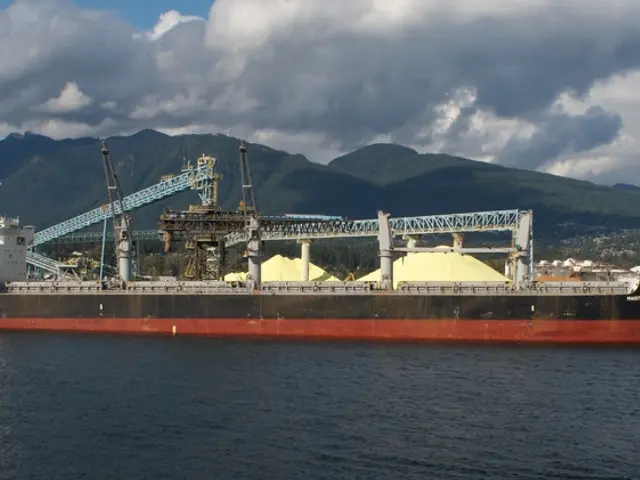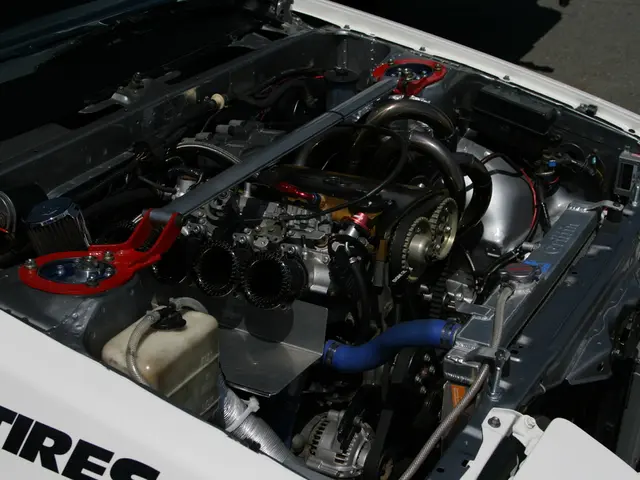Earthbound Descent of Soviet Spacecraft "Kosmos-482"
Space Debris Alert: Soviet Spacecraft to Plunge to Earth, Risking Residential Areas
Get ready for a piece of space history crashing down to our planet! A hefty Soviet interplanetary spacecraft, nicknamed the "Kosmos-482" landing module, was launched towards Venus in 1972 but has been orbiting Earth since then. Now, it's GPS time. Experts predict the alien invader will make its way through Earth's atmosphere somewhere in the first half of May, though the exact landing spot is still a mystery.
This cosmic relic, originally part of the "Kosmos-482" station, was designed to help us understand Venus better, but it ended up on an unexpected journey around our planet instead.
The "Kosmos-482" was launched from the Baikonur Cosmodrome early in the morning on March 31, 1972, as a backup for the "Venera-8" mission. Both spacecraft looked pretty much the same, with the same equipment and characteristics. Launching two at once was a common strategy to boost the chances of success in interplanetary research.
Unfortunately, things didn't go as planned for "Kosmos-482." The first three stages of the launch vehicle functioned correctly, placing the payload on a parking orbit where most interplanetary stations take their leave for their targets. However, the spacecraft failed to switch to an interplanetary trajectory due to an upper-stage malfunction, which stopped working prematurely.
To disguise the failed launch as a successful orbit insertion, the Soviet Union gave it a "Kosmos" designation. According to NASA's website, the spacecraft eventually broke apart into four pieces: two remained in low Earth orbit and burned up in the atmosphere within 48 hours, while the other two (presumably the descent module and the engine block) went on to an extended elliptical orbit.
Pieces of titanium fuel tanks fell from orbit and crashed in New Zealand over several days, but parts of the station and the fourth stage of the rocket, known as Block L, remained on an elongated elliptical orbit. The highest point (apogee) was around 9800 km, and the lowest (perigee) was approximately 210 km.
Experts predict that due to the shape of the re-entry module and its design for harsh Venusian landing conditions, it managed to stay in orbit for 53 years. That's quite a feat for a spacecraft!
However, the uncontrolled crash is cause for concern. "Kosmos-482" won't disintegrate completely during re-entry, and there's a risk it might crash in residential areas. To make matters worse, the landing module was designed for a harsher Venusian entry, meaning its heat shield and airtight compartment might survive Earth's atmosphere. Although the apparatus probably won't remain intact, the exact state it'll be in after the atmosphericEntry remains uncertain.
So, what's the danger? If the "Kosmos-482" lands intact and impacts the Earth at its estimated speed of 242 km/h, the impact energy would be approximately 1.1-1.2 megajoules, which is equivalent to the detonation of a few hundred grams of TNT. Scary stuff!
As for where it might land, calculations based on the orbit parameters suggest that the debris will likely fall over the territories of Egypt, Syria, Turkey, and Azerbaijan. But hey, don't freak out just yet - the chance of harm to individuals remains extremely low, according to experts.
Stay tuned for updates on the exciting fall of "Kosmos-482," scheduled to happen between May 8 and 14. Buckle up for a wild ride!
By the way, if you're interested, this event is a fun reminder of the challenges scientists face when sending missions to outer space. Space exploration is a thrilling adventure, but it's also unpredictable and sometimes uncertain. [Source: NASA, BBC, Space.com]
[1] NASA: https://www.nasa.gov/centers/goddard/news/topstory/2025/cosmos482_update.html[2] Space.com: https://www.space.com/18554-russian-cosmos-482-spacecraft-to-fall-from-orbit-in-2012.html[3] BBC: https://www.bbc.com/news/science-environment-55861926
- The spacecraft, Kosmos-482, originally intended for Venus, is predicted to crash to Earth, posing a potential risk to residential areas during the first half of May.
- Launched in 1972, the Kosmos-482 was part of the space-and-astronomy technology, designed to further science's understanding of Venus, but it ended up on an unexpected journey around Earth.
- The likelihood of harm to individuals remains extremely low, according to experts, despite the science and technology community monitoring the cosmic relic's re-entry.
- The exact landing point is still a mystery, but the likelihood is that the debris will likely fall over the territories of Egypt, Syria, Turkey, and Azerbaijan.




